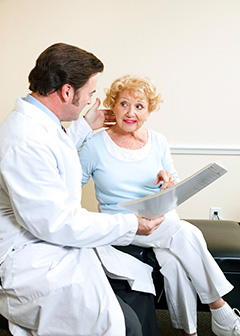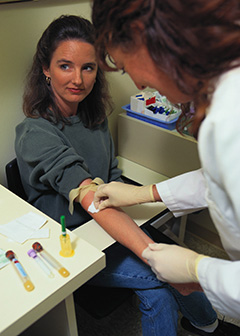
Physician assistants often treat minor injuries, instruct and counsel patients, and order or carry out therapy.
Physician assistants typically need a master's degree. Most applicants to master’s programs already have a bachelor’s degree and some work experience. Then, they must complete an accredited educational program for physician assistants. That usually takes at least 2 years of full-time study and typically leads to a master’s degree. All states require physician assistants to be licensed.
Education
Most applicants to physician assistant education programs already have a bachelor’s degree and some healthcare-related work experience. However, admissions requirements vary from program to program.
Many assistants already have experience as registered nurses, emergency medical technicians (EMTs), or paramedics before they apply to a physician assistant program. For more information, see the profiles on registered nurses and EMTs and paramedics.
Physician assistant education programs usually take at least 2 years of full-time study. In 2011, the Accreditation Review Commission on Education for the Physician Assistant accredited 165 education programs. Most of these accredited programs offer a master’s degree. Others offer a bachelor’s degree, and a very few award an associate’s degree or graduate certificate.
These physician assistant programs are at schools of allied health, academic health centers, medical schools, and 4-year colleges. A few are part of the military or are found at community colleges or hospitals.
Physician assistant education includes classroom and laboratory instruction in subjects such as pathology, human anatomy, physiology, clinical medicine, physical diagnosis, and medical ethics. The programs also include supervised clinical training in several areas, including family medicine, internal medicine, emergency medicine, and pediatrics. Many accredited programs have clinical teaching affiliations with medical schools.
Sometimes, students serve in one or more of these areas under the supervision of a physician who is looking to hire a physician assistant. In this way, the rotation may lead to permanent employment.
Important Qualities
Compassion. Many physician assistants are drawn to the profession by a desire to help people. They should enjoy helping others.
Detail oriented. Physician assistants should be focused and observant to properly evaluate patients and follow doctor’s orders.
Emotional stability. Physician assistants, particularly those working in surgery or emergency medicine, should be able to work well under pressure. They must remain calm in stressful situations to provide quality care.
Licenses
All states and the District of Columbia require physician assistants to be licensed. To become licensed, they must pass the Physician Assistant National Certifying Examination from the National Commission on Certification of Physician Assistants (NCCPA). After they pass the exam, they may use the credential “Physician Assistant-Certified.”
Physician assistants must take continuing education to keep their license. Every 6 years, they must pass a recertification exam or complete an alternative program combining learning experience and a take-home exam.
Advancement
Some physician assistants pursue additional education in a specialty. Postgraduate educational programs are available in areas such as internal medicine, rural primary care, and occupational medicine. To enter one of these programs, a physician assistant must be a graduate of an accredited program and be certified by the NCCPA.
As they get greater clinical knowledge and experience, physician assistants can earn new responsibilities and higher wages. However, by the very nature of the profession, clinically practicing physician assistants always are supervised by physicians. For more information, see the profile on physicians and surgeons.











